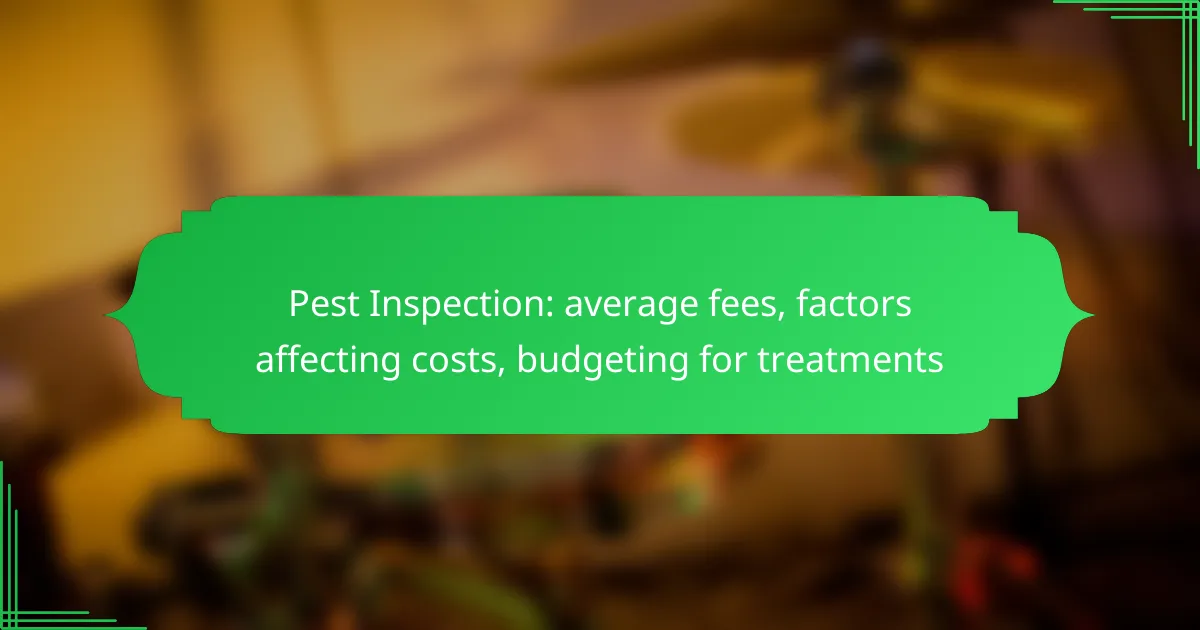Pest inspection fees in the United States generally range from $100 to $300, influenced by factors such as property size and the type of pests involved. Homeowners should be aware of these costs and budget accordingly to ensure they can manage both inspection and potential treatment expenses effectively.
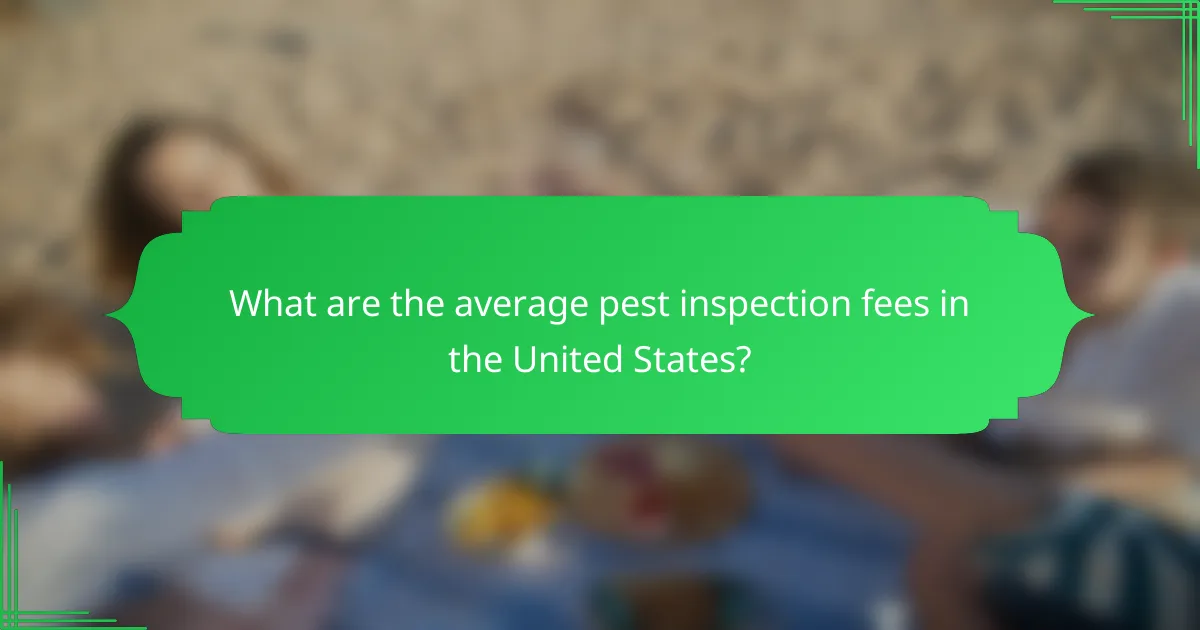
What are the average pest inspection fees in the United States?
The average pest inspection fees in the United States typically range from $100 to $300, depending on various factors such as the size of the property and the type of pests being inspected. Homeowners should budget accordingly to ensure they can cover these costs when seeking professional pest control services.
National average cost
The national average cost for a pest inspection is around $200. This fee generally includes a thorough examination of the property for signs of infestation and potential pest entry points. Some companies may offer free inspections as part of a treatment package, so it’s worth exploring different options.
Cost range by region
Pest inspection costs can vary significantly by region. For example, inspections in urban areas may be higher, often starting at $150, while rural inspections might be lower, around $100. Coastal states may also see elevated prices due to higher demand and living costs.
Factors influencing pricing
Other factors include the inspector’s experience and reputation, as well as any additional services offered, such as follow-up treatments or warranties. Homeowners should compare multiple quotes to find the best value for their specific needs.
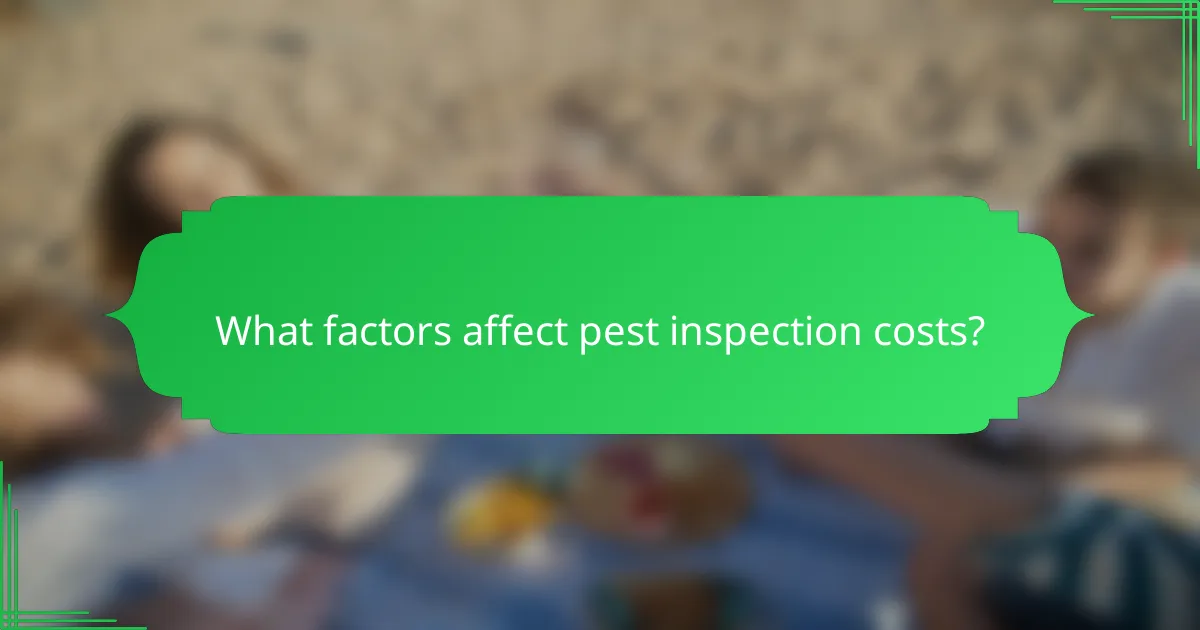
What factors affect pest inspection costs?
Pest inspection costs can vary significantly based on several key factors, including property size, infestation severity, and the methods used during the inspection. Understanding these elements can help you budget effectively for pest control services.
Property size and type
The size and type of property being inspected play a crucial role in determining the cost of pest inspections. Larger properties, such as multi-story buildings or expansive homes, typically incur higher fees due to the increased time and resources required for a thorough examination.
Additionally, the type of property can affect costs. Residential properties may have different pricing structures compared to commercial spaces, with commercial inspections often being more complex and expensive due to stricter regulations and larger areas to cover.
Infestation severity
The severity of the pest infestation directly influences the inspection costs. A minor pest issue may require a standard inspection, while a severe infestation could necessitate more extensive evaluation and treatment options, leading to higher fees.
For example, if a property shows signs of widespread termite damage, the inspector may need to conduct specialized assessments, which can increase the overall cost. Being aware of the infestation level can help you prepare for potential expenses.
Inspection methods used
The methods employed during the pest inspection can also affect pricing. Traditional visual inspections are generally less expensive, while advanced techniques like thermal imaging or moisture meters can increase costs due to the specialized equipment and expertise required.
When considering inspection methods, weigh the benefits of thoroughness against the potential costs. For properties with a history of pest problems, investing in advanced methods may save money in the long run by identifying issues early.
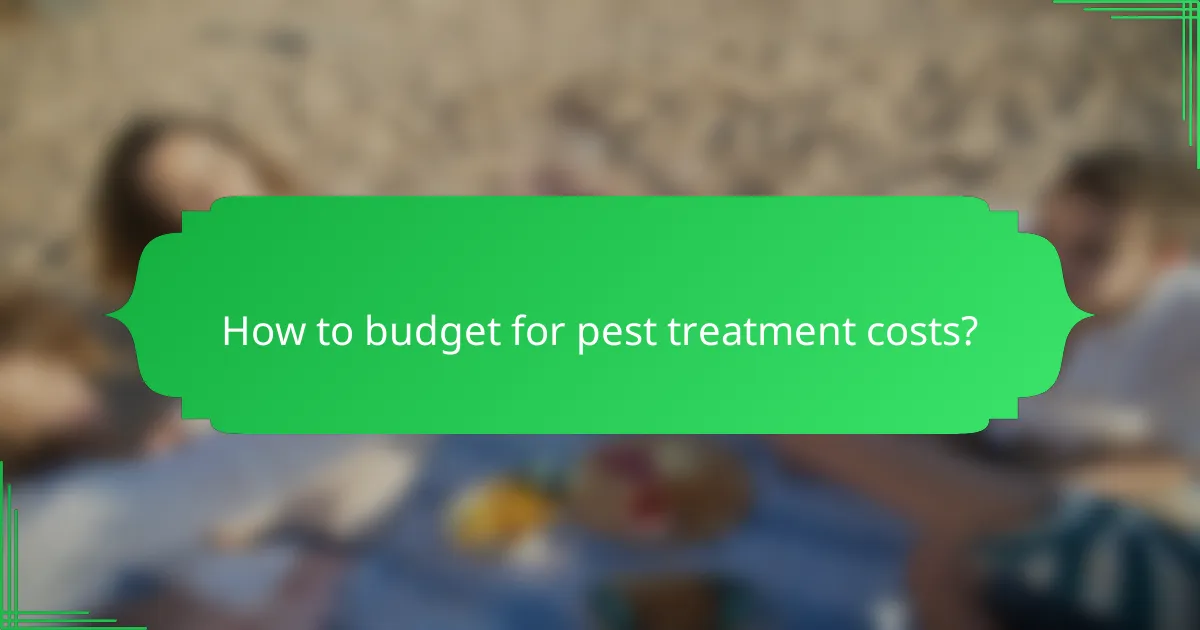
How to budget for pest treatment costs?
To budget for pest treatment costs, consider the average fees, factors affecting these costs, and the potential need for ongoing treatments. By understanding these elements, you can allocate your finances effectively and avoid unexpected expenses.
Estimating treatment expenses
Estimating treatment expenses involves understanding the typical costs associated with pest control services, which can range from a few hundred to over a thousand dollars depending on the severity of the infestation and the type of pest. For example, basic treatments for common pests like ants or roaches may cost between $100 and $300, while more severe infestations, such as termites, can exceed $1,000.
Factors such as the size of your property, the extent of the infestation, and the specific treatment methods required will influence the final cost. It’s advisable to obtain multiple quotes from pest control companies to compare prices and services offered.
Setting aside emergency funds
Setting aside emergency funds for pest treatments is a smart strategy to manage unexpected infestations. Aim to save a few hundred dollars specifically for pest control, as this can help you respond quickly to urgent situations without financial strain.
Consider creating a dedicated savings account for home maintenance issues, including pest control. This way, you can ensure that funds are available when needed, preventing delays in treatment that could worsen the infestation.
Insurance coverage considerations
Insurance coverage for pest control varies significantly by policy and provider. Some homeowners’ insurance policies may cover specific pest-related damages, like those caused by termites, but often do not cover the cost of preventative treatments or extermination services.
Review your insurance policy to understand what is included and consider discussing pest control coverage with your insurance agent. If your policy does not cover pest treatments, you might want to explore additional coverage options or consider a pest control service that offers warranties or maintenance plans to mitigate future costs.
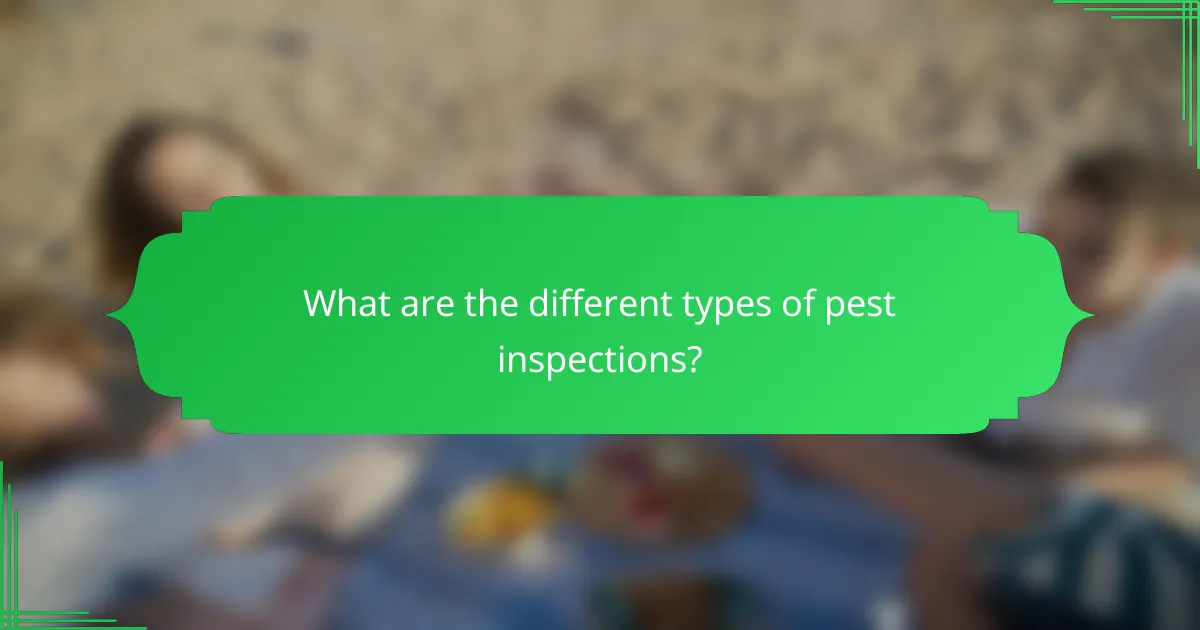
What are the different types of pest inspections?
Pest inspections can be categorized into various types based on the property type and specific pest concerns. Understanding these categories helps homeowners and businesses choose the right inspection to address their needs effectively.
Residential pest inspections
Residential pest inspections focus on homes and apartments, assessing common pests like rodents, termites, and ants. Inspectors evaluate both the interior and exterior, checking for signs of infestation, damage, and conducive conditions.
Typically, the cost for a residential pest inspection ranges from $100 to $300, depending on the property’s size and location. Homeowners should consider scheduling inspections annually or bi-annually to prevent infestations.
Commercial pest inspections
Commercial pest inspections are tailored for businesses, including offices, restaurants, and warehouses. These inspections often require a more comprehensive approach due to the larger spaces and higher traffic, which can increase pest activity.
Costs for commercial inspections can vary significantly, often starting at around $200 and going up to $1,000 or more based on the facility’s size and complexity. Regular inspections are crucial for maintaining a pest-free environment and complying with health regulations.
Specialized inspections for termites
Specialized inspections for termites are focused assessments that identify termite activity and damage. These inspections often involve advanced techniques like moisture meters and infrared cameras to detect hidden infestations.
The average cost for a termite inspection typically ranges from $75 to $200, depending on the property’s location and size. Homeowners should consider these inspections especially if they live in areas where termites are prevalent, as early detection can save significant repair costs.
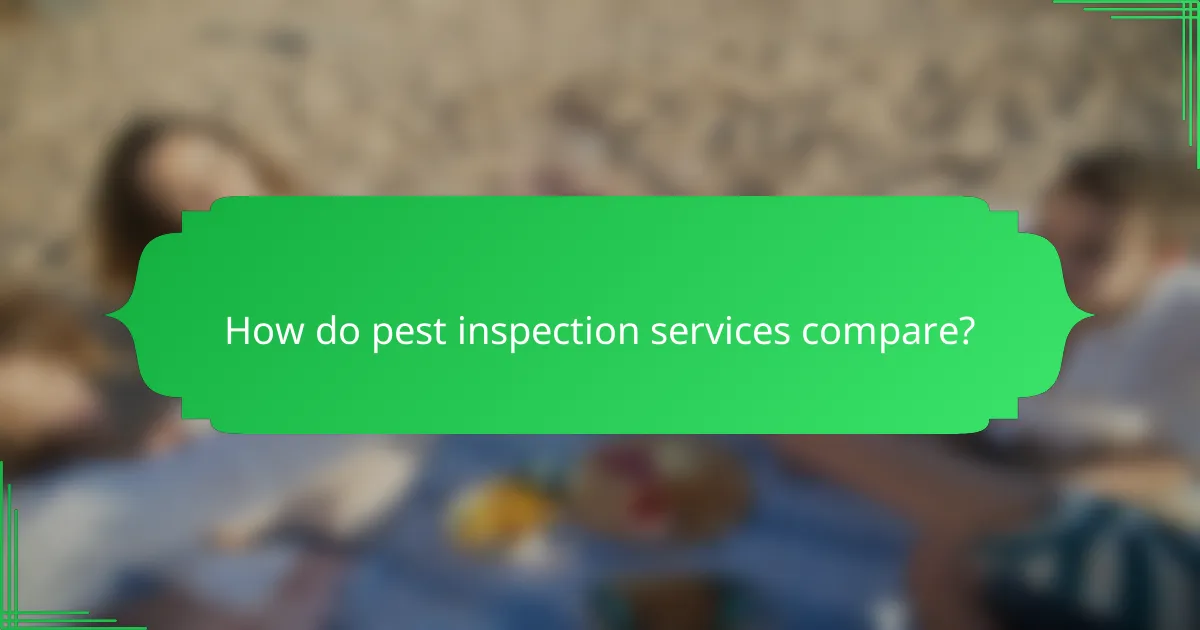
How do pest inspection services compare?
Pest inspection services vary significantly in terms of pricing, service offerings, and customer satisfaction. Understanding these differences can help you make an informed decision about which service best meets your needs.
Local vs. national pest control companies
Local pest control companies often provide personalized service and may have a deeper understanding of regional pest issues. They typically charge lower fees, ranging from $50 to $150 for inspections, compared to national companies that might charge $100 to $300.
National companies may offer more extensive resources and standardized services, but this can come at a premium. Consider your specific pest problem and local expertise when choosing between these options.
Service package comparisons
Pest inspection services can vary in their offerings, from basic inspections to comprehensive packages that include follow-up treatments. Basic inspections usually cover visual assessments, while comprehensive packages may include detailed reports and preventive measures.
When comparing service packages, look for what is included, such as the number of visits, types of pests covered, and any guarantees offered. This can help you determine the best value for your budget.
Customer reviews and ratings
Customer reviews and ratings are crucial in assessing pest inspection services. Look for companies with consistently high ratings, as this often indicates reliable service and effective pest management.
Check multiple review platforms to get a balanced view. Pay attention to comments about customer service, thoroughness of inspections, and follow-up support, as these factors can significantly impact your experience.
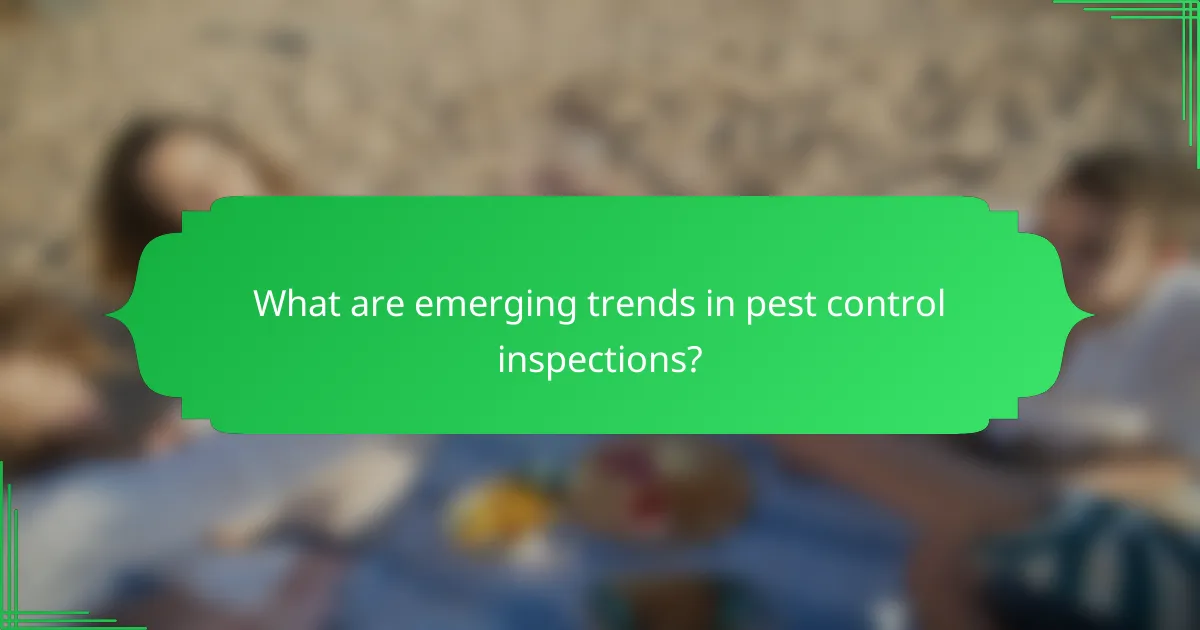
What are emerging trends in pest control inspections?
Emerging trends in pest control inspections focus on technology integration, eco-friendly solutions, and proactive management strategies. These advancements aim to enhance efficiency, reduce chemical usage, and improve the overall effectiveness of pest management.
Average fees for pest inspections
The average fees for pest inspections can vary significantly based on location, property size, and the type of pests being assessed. Generally, homeowners can expect to pay between $75 and $300 for a standard inspection.
In urban areas or for larger properties, costs may rise, sometimes reaching up to $500. It’s advisable to obtain quotes from multiple service providers to ensure competitive pricing.
Factors affecting pest inspection costs
Additionally, the geographical area plays a role; regions with higher living costs typically see higher inspection fees. Seasonal demand can also affect pricing, with peak seasons often leading to increased rates.
Budgeting for pest treatments
When budgeting for pest treatments, consider both the initial inspection costs and potential follow-up treatments. It’s wise to allocate a budget that covers not only the inspection but also any necessary treatments, which can range from a few hundred to several thousand dollars depending on the severity of the infestation.
Establishing a pest management plan can help spread costs over time. Regular inspections and preventive treatments can ultimately save money by addressing issues before they escalate. Always factor in potential costs for re-inspections or additional treatments if pests return.
